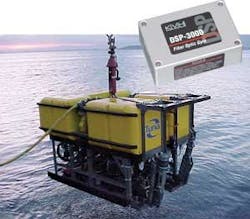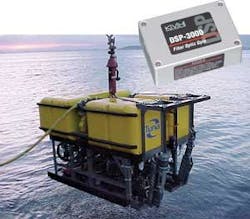By John Keller
MIDDLETOWN, R.I. - Designers of several remotely operated undersea vehicles needed inertial navigation systems to help their craft find their way in the world’s oceans.
They found their solution from KVH Industries Inc. in Middletown, R.I.
Remotely operated vehicles (ROVs) play roles in a variety of applications, including oil exploration, undersea construction, and research and salvage operations.
Subsea 7 in Houston, a company that owns and operates more than 100 ROVs worldwide, uses KVH FOGs on the company’s Tuna 2 and Centurion 25 ROVs.
“We are really impressed with their reliability, as they’ve done over 5,000 hours of use without a single failure in the last three years,” explained Clovis Galdino, Subsea 7’s operations manager. “They are also light, relatively small and of low power consumption, which has made installation a lot easier. We are pleased to recommend these gyros as a sound and cost effective solution for ROVs.”
Meanwhile, Silvercrest Submarines in Gloucester, England, which specializes in manned submarines, ROVs, and submarine operations, employs the KVH C100 digital compass engine, says Silvercrest’s Alan Whitefield.
“We use a KVH fluxgate compass on one of our six-man submarines. It works extremely well and is ideal for our application,” Whitefield says.
In another undersea application, KVH’s TG-6000 inertial measurement unit (IMU) is undergoing final testing as a key component in the guidance package designed for the U.S. Navy’s next-generation MK54 lightweight torpedoes.
With their all-fiber design and patented digital signal processing (DSP) technology, KVH’s FOGs offer reliability, accuracy, and resistance to vibration, shock, and acceleration.
KVH FOG products are used in diverse commercial and defense-related applications requiring a high level of accuracy. Supplementing KVH’s FOG family is its C100 digital compass engine, a stand-alone sensor subsystem based on KVH’s fluxgate compass technology.
The C100 outputs extremely accurate heading data in six user-selectable digital or analog formats and can easily direct any underwater mission, whether it is for scientific research or undersea filming.
For more information contact KVH online at www.fiberopticgyro.com.




